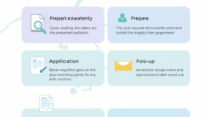
Unlock Their Future: Investing in Stocks to Fund Your Child’s Education

Hello there, caring parents and guardians! If you’re reading this, chances are you’re already thinking ahead, planning for one of the most significant investments you’ll make in your child’s life: their education. Whether it’s college, trade school, or another form of advanced learning, the costs can be substantial and seem to rise every year. Saving consistently is a fantastic start, but to truly keep pace with rising tuition and fees, your money needs to grow. This is where investing, particularly in stocks, can play a crucial role in turning that daunting goal into an achievable reality. Let’s explore how you can use the power of the stock market to build a robust education fund for your child’s future.
Saving for education is a long-term endeavor, often spanning 10, 15, or even 18 years from birth until college age. This long time horizon is a significant advantage when it comes to investing. While the stock market can be volatile in the short term, experiencing ups and downs, historically, it has provided the highest potential for growth compared to other asset classes like bonds or cash over extended periods. This growth potential is essential for accumulating the large sum needed to cover future education expenses, which are likely to be much higher than current costs due to inflation.
Why Stocks Are a Smart Choice for Long-Term Education Savings
Investing in stocks means owning a piece of companies that are working to grow and become more profitable over time. As these companies succeed, their stock values can increase, and many also pay dividends, which can be reinvested to buy more shares. This process, known as compounding, is incredibly powerful over long periods. The earnings from your investments start earning their own returns, creating a snowball effect that can significantly boost your savings over 10 or 15 years.
For a long-term goal like education funding for a young child, you have the time to ride out the inevitable market fluctuations. A market downturn that happens when your child is young might recover well before they are ready for college. This allows you to potentially take on a bit more risk early on in exchange for higher growth potential, gradually shifting to more conservative investments as the college years approach.
Utilizing Tax-Advantaged Education Savings Plans
The US government offers specific tax-advantaged plans designed to help families save for education. These plans provide tax benefits that can make a big difference in how quickly your savings grow:
**529 Plans:** These are the most popular education savings plans. Contributions are made with after-tax dollars, but the investments grow tax-free, and qualified withdrawals for eligible education expenses (like tuition, fees, room and board, books, and even K-12 expenses up to a certain limit) are also tax-free. Many states offer a state income tax deduction or credit for contributions. 529 plans typically offer a range of investment options, often including age-based portfolios (which automatically become more conservative as your child gets older) and static portfolios (where you choose the asset allocation). You can invest in stock mutual funds and ETFs within a 529 plan.
**Coverdell Education Savings Accounts (ESAs):** These also allow after-tax contributions that grow tax-free, with tax-free withdrawals for qualified education expenses (including K-12 and higher education). Coverdell ESAs offer more investment flexibility than many 529 plans, allowing you to invest in individual stocks, bonds, and a wider range of funds. However, they have lower annual contribution limits and income restrictions for contributors compared to 529 plans.
Using these tax-advantaged accounts is generally the most tax-efficient way to save and invest for education. They shield your investment gains from annual taxation, allowing for greater compounding.
Considering Taxable Brokerage Accounts
While tax-advantaged plans are ideal, you can also invest for education in a regular taxable brokerage account. The advantage here is flexibility – there are no contribution limits (beyond what you can afford), no restrictions on who can contribute, and the money can be used for any purpose (though withdrawals of earnings will be taxed). The downside is that investment earnings (dividends, interest, capital gains) are subject to annual taxation, which can slow down growth compared to tax-free or tax-deferred accounts.
If you use a taxable account, employing tax-efficient investing strategies (like focusing on long-term capital gains, using tax-efficient ETFs, and potentially tax-loss harvesting) becomes more important to maximize your after-tax returns.
Tailoring Your Investment Strategy to Your Child’s Age
Your investment strategy should evolve as your child gets closer to needing the funds. This is where the time horizon is key:
**Young Children (Birth to Age 8-10):** With a long time horizon (10+ years), you can typically afford to be more aggressive. A higher allocation to stocks (perhaps 80-100%) is common in this phase to maximize growth potential. Market volatility is less concerning because you have many years for the market to recover from downturns.
**Mid-Range (Age 8-14):** As the time horizon shortens (5-10 years), you’ll want to start gradually reducing risk. This means shifting some of your allocation from stocks to more conservative investments like bonds. Age-based 529 plans do this automatically. If managing it yourself, start a gradual rebalancing process.
**Teenagers (Age 15+):** With only a few years left, capital preservation becomes the priority. Your allocation should be significantly more conservative, with a much higher percentage in bonds and cash to protect the money you’ve saved from potential market downturns just before you need it. A common allocation might be 60-80% bonds/cash and 20-40% stocks.
This gradual shift from growth-focused to capital-preservation is crucial for managing the risk of a market drop right before college tuition is due.
Choosing Your Investments Within the Plan
Within your chosen savings vehicle (529, Coverdell, or taxable account), you’ll need to select specific investments. For most investors, especially within 529 plans, age-based portfolios are a simple and effective option as they handle the asset allocation adjustments automatically. If you prefer more control, or are using a Coverdell or taxable account, consider building a diversified portfolio using low-cost stock ETFs or mutual funds that cover different parts of the market (e.g., a total US stock market ETF, an international stock ETF).
Avoid trying to time the market or pick individual hot stocks with your education savings, especially as the college date approaches. A diversified, low-cost approach is generally more reliable for meeting this important long-term goal.
Staying Disciplined and Consistent
Consistency is key. Set up automatic contributions from your bank account or paycheck into your chosen education savings plan. This ensures you’re regularly putting money away, regardless of market conditions. Avoid the temptation to stop contributing during market downturns; in fact, buying when the market is down can be beneficial in the long run.
Regularly review your plan (at least annually) to check your progress, confirm your asset allocation is still appropriate for your child’s age, and make any necessary adjustments. As mentioned earlier, if you’re not using an age-based fund, make sure you are actively shifting towards more conservative investments as college approaches.
Summary: Investing in Their Potential
In summary, investing in stocks, particularly within tax-advantaged accounts like 529 plans and Coverdell ESAs, is a powerful and often necessary strategy for meeting the rising costs of education in the US. The long time horizon allows you to leverage the growth potential of the stock market and the power of compounding. By starting early, contributing consistently, choosing an asset allocation appropriate for your child’s age (and adjusting it over time), and staying disciplined, you can build a substantial education fund. It requires planning and commitment, but the potential to provide your child with educational opportunities is a truly rewarding investment. Start investing in their future today!







